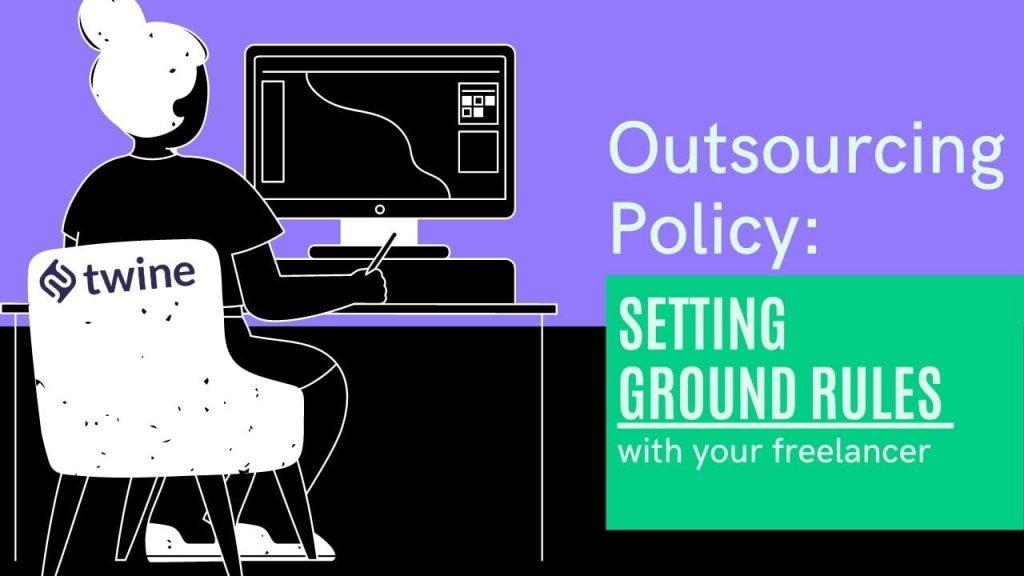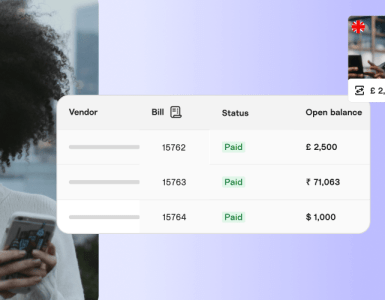
Before you hire a freelancer for a project, it’s vital you don’t stray far from the classic outsourcing policy – and that is, to always set ground rules.
Clear ground rules ensure you’re both on the same page, so there are no potential issues further down the line. Who wants to find out they forgot to give their freelancer a deadline the day before the project is due? Not us.
In this article, we’ll show you how to stick to the most common outsourcing policy, and set yourself and your freelancer some valuable ground rules.
Clarify the Project Spec
The first thing you need to do when outsourcing work, is to make it crystal clear what work you want the freelancer to do for you.
The benefits of freelancing are many, but unfortunately, mind-reading isn’t one of them. If the only details you’ve provided are “I want a website” or “I need some graphics“, you’re going to struggle to get the result you actually want. Remember, this project will be brand new to a freelancer, so introduce them to it – there’s no such thing as overexplaining here!
If you want a happy freelancer, and not to mention high-quality work, then you need to give them everything they need to get the job done.
If you’re not sure whether you’ve given the freelancer enough details then imagine it was a brief that you had to carry out – could you get it done on those details alone?
If you’re still not sure then ask your friends and colleagues to check it over. The most important thing is not to say “it’s up to you” because 9/10, it isn’t. There’s nothing worse than giving your freelance professional complete creative freedom, and then telling them it’s all wrong at the very end!
A great outsourcing policy means solid ground rules are set, with the project having clear requirements and parameters.
Be Upfront With The Budget
Creative work shouldn’t all be about money, but if you’re clear and upfront about what your budget is then a freelance job is made much, much easier. After all, you don’t want to get into a situation where the work is done but out of reach – all because you didn’t clarify the budget with the freelancer’s rate…
If you’re unsure what the budget should be – research it online. Or, if you want more hands-on guidance, get advice from colleagues or chat about the budget with the freelancer. (To help you out, we’ve got budgeting guides for animation, logo & graphic design, illustration and video production so you aren’t making a complete stab in the dark).
Make sure you also factor in the cost of any revisions that you agree on (more on that later). If you’re particularly concerned about this, it might be good to get a contract drawn up.
Agree on The Timescale
Once you’ve got money out the way, the next priority for freelance business should be clarifying when the work needs to be completed. If you’ve got a definite deadline, then it’s vital the freelancer is aware of it – this could be considered one of the most important aspects of the outsourcing policy…
If you don’t have a definite date you need the work done by, you should at least give the freelancer a general timescale, but always try to overestimate. Giving your freelancer more time than necessary is beneficial as it means a.) they can organise your project amongst their other commitments and b.) better to be safe than sorry, right?
It’s a good idea to have project milestones (particularly if it’s a big project) so that the freelancer can break up the project into manageable chunks – and you have time to see how it’s all going. If you do have milestones then set firm dates, otherwise, there’s a risk that it will get to deadline day and you may not have seen any of it…
Avoid Nasty Surprises
Revisions, if not used accordingly, can create rather large issues in the freelancer work process. Stick to the outsourcing policy and make sure you take full advantage of this ground rule!
Many freelancers have their own policies, but most will allow and prefer quick edits – like if you want to change colour, sound or font etc. A revisional issue may occur when, for example, the parameters of the project change and requests are made that were not in the original brief.
Very often, clients think it’s a simple change – but actually, your simple change may take your freelancer hours, if not days, to do. Consult them at the beginning and make them aware of any potential changes down the line. If you know what the cost is for any changes then include those too, to avoid any nasty surprises spring up on the freelancer.
Delivering the Work
The final ground rule you must set is how the work should be delivered. Often, this is the ground rule in the outsourcing policy that gets missed out, because the client and freelancer have only thought about the content.
In your exploration of freelance work, you may have heard horror stories of freelancers sending a PDF, JPEG or audio mix over to the client – when, actually, the client wanted the project files (or vice versa). Then, the freelancer has a blissful, oblivious holiday and the client is stuck with a project they can’t do anything with. Nightmare, right?
Avoid that trouble and be specific and clear at the very beginning. Leaving your freelancer in the dark, with any of the ground rules, will only create a bitter situation for you in the long run…
To conclude, here are the most important aspects of the outsourcing policy you need to take away. The freelancer must be clear about exactly what the work is, how much they’ll be paid and when it needs to be done.
You can’t always be prepared for how projects might change, but if you have solid ground rules set at the beginning, and you’re upfront and honest with your freelancer, then you’re on track to having a freelancing online job from heaven!
Ready to hire? Our marketplace of over 410,000 freelancers have the skills and expertise needed to skyrocket your business to the next level. From marketers to designers, copywriters to SEO experts – browse the talented bunch here!








